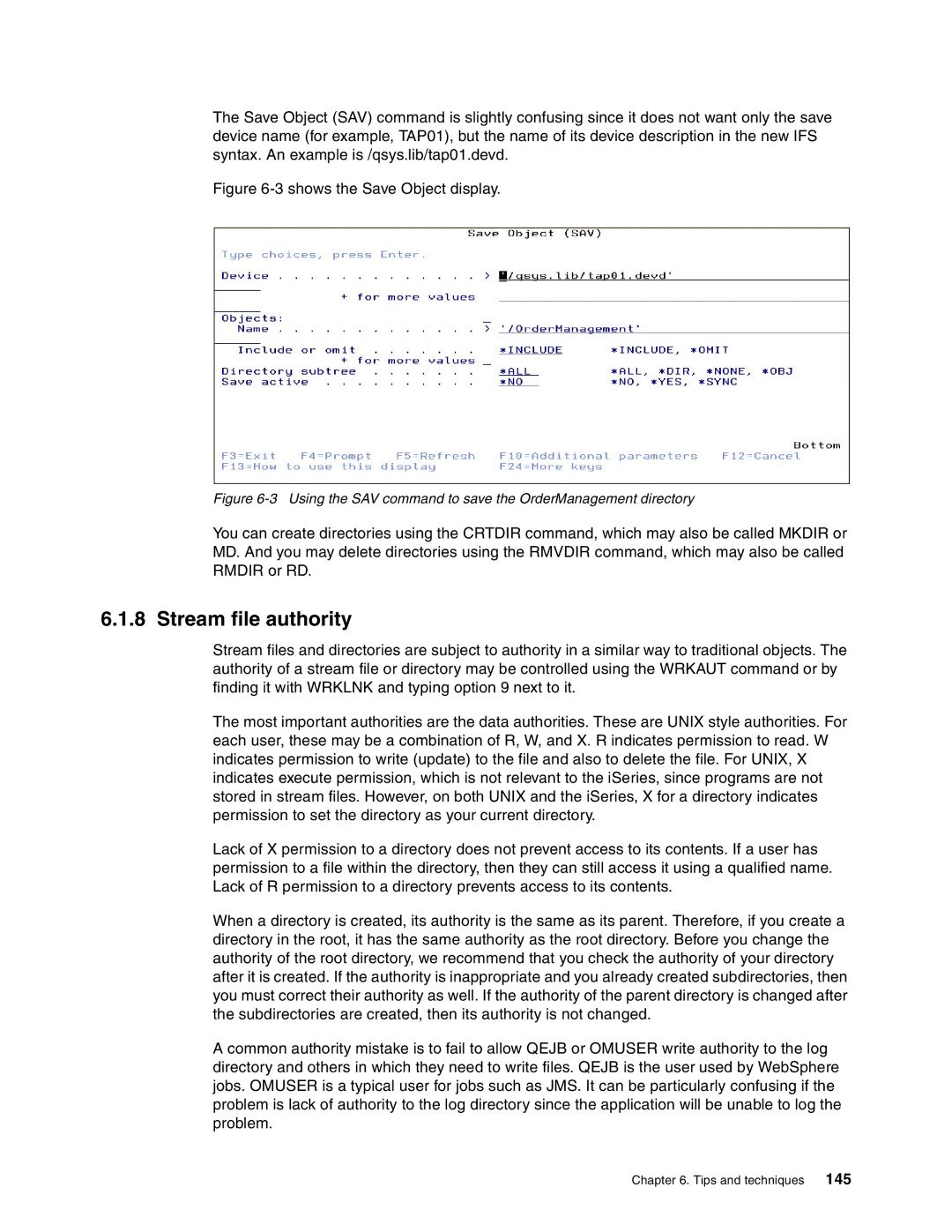
The Save Object (SAV) command is slightly confusing since it does not want only the save device name (for example, TAP01), but the name of its device description in the new IFS syntax. An example is /qsys.lib/tap01.devd.
Figure 6-3 shows the Save Object display.
Figure 6-3 Using the SAV command to save the OrderManagement directory
You can create directories using the CRTDIR command, which may also be called MKDIR or MD. And you may delete directories using the RMVDIR command, which may also be called RMDIR or RD.
6.1.8 Stream file authority
Stream files and directories are subject to authority in a similar way to traditional objects. The authority of a stream file or directory may be controlled using the WRKAUT command or by finding it with WRKLNK and typing option 9 next to it.
The most important authorities are the data authorities. These are UNIX style authorities. For each user, these may be a combination of R, W, and X. R indicates permission to read. W indicates permission to write (update) to the file and also to delete the file. For UNIX, X indicates execute permission, which is not relevant to the iSeries, since programs are not stored in stream files. However, on both UNIX and the iSeries, X for a directory indicates permission to set the directory as your current directory.
Lack of X permission to a directory does not prevent access to its contents. If a user has permission to a file within the directory, then they can still access it using a qualified name. Lack of R permission to a directory prevents access to its contents.
When a directory is created, its authority is the same as its parent. Therefore, if you create a directory in the root, it has the same authority as the root directory. Before you change the authority of the root directory, we recommend that you check the authority of your directory after it is created. If the authority is inappropriate and you already created subdirectories, then you must correct their authority as well. If the authority of the parent directory is changed after the subdirectories are created, then its authority is not changed.
A common authority mistake is to fail to allow QEJB or OMUSER write authority to the log directory and others in which they need to write files. QEJB is the user used by WebSphere jobs. OMUSER is a typical user for jobs such as JMS. It can be particularly confusing if the problem is lack of authority to the log directory since the application will be unable to log the problem.
Chapter 6. Tips and techniques 145
